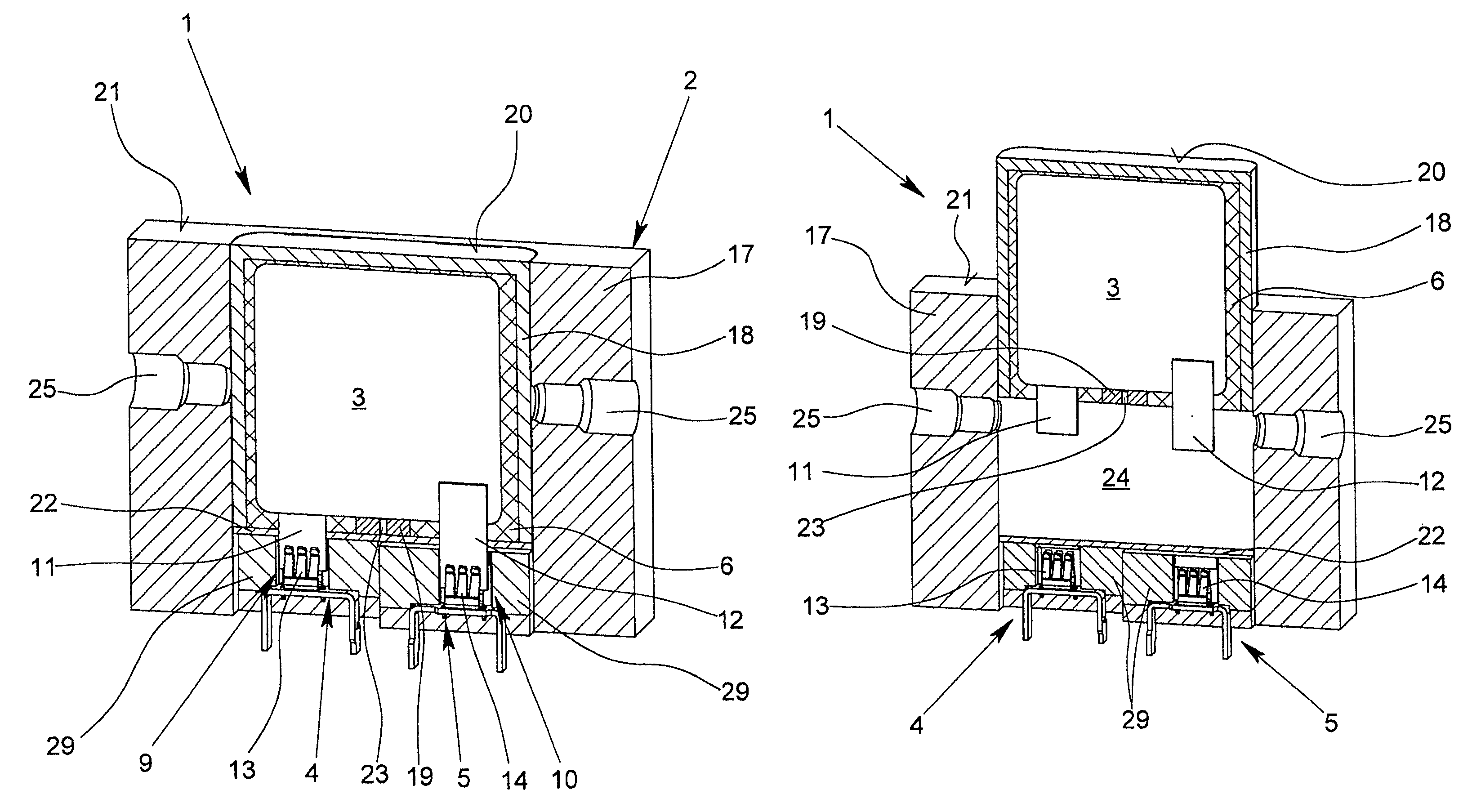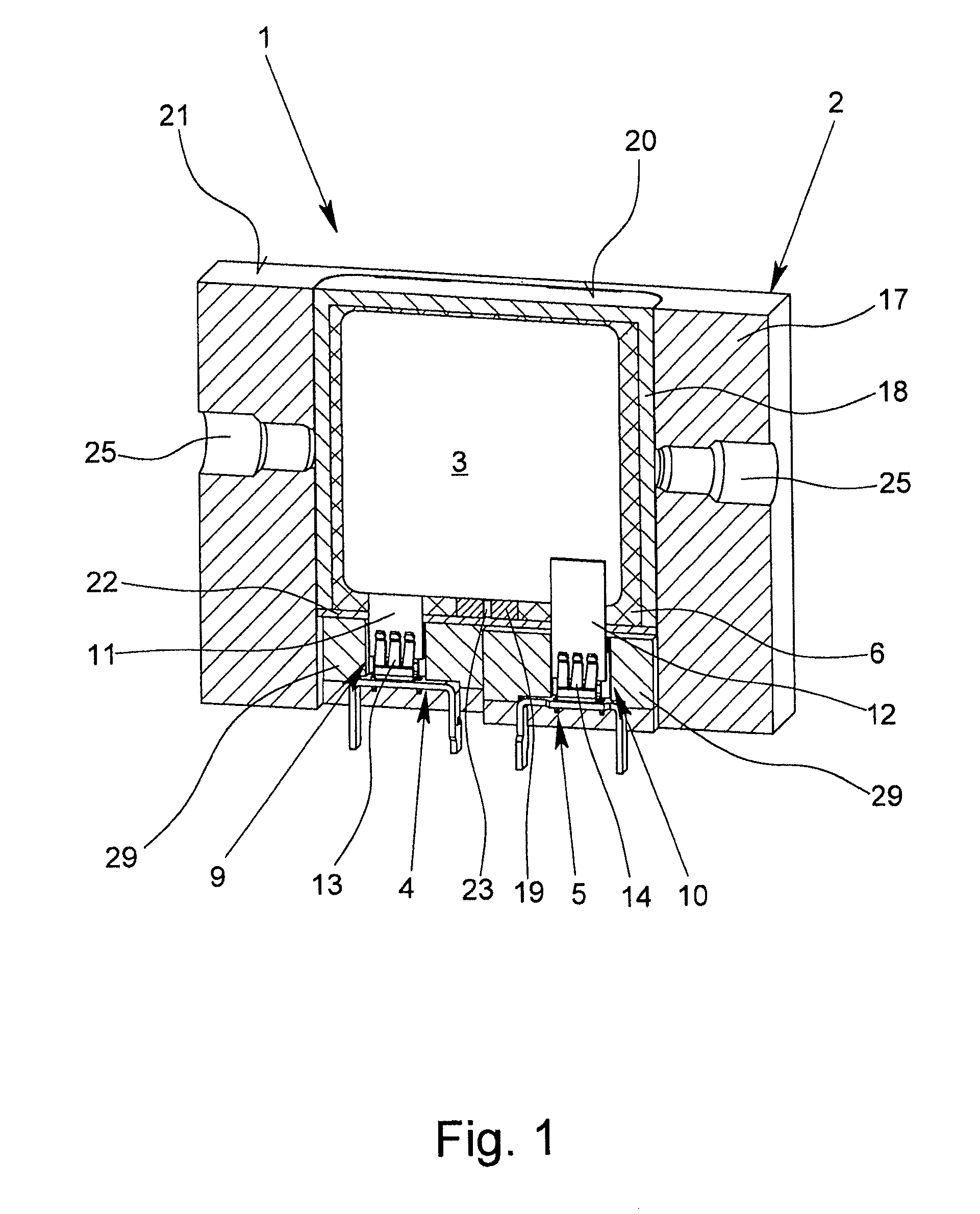Overvoltage protection element
a protection element and overvoltage technology, applied in overvoltage protection resistors, spark gap details, relays, etc., can solve the problems of varistor electrical disconnection, solder connection melting, solder connection continuously loaded with shear stress, etc., and achieve the effect of increasing volum
- Summary
- Abstract
- Description
- Claims
- Application Information
AI Technical Summary
Benefits of technology
Problems solved by technology
Method used
Image
Examples
Embodiment Construction
[0051]The figures show an overvoltage protection element 1 with a housing 2, and an overvoltage limiting component located in the housing 2. In the exemplary embodiment according to FIGS. 1 to 3, the overvoltage limiting component is a varistor 3, while the overvoltage protection elements 1 according to FIGS. 4 to 12 use a gas-filled surge arrester 3′.
[0052]The overvoltage protection element 1 according to FIGS. 1 to 3 can be made as a protective plug having two connection elements 4, 5 which can be inserted into corresponding receptacles of the lower part of a device (not shown). The connection elements 4, 5 are each connected to a pole of the varistor 3 in the normal state of the overvoltage protection element 1 so that the varistor 3 can be connected via the two connection elements 4, 5 to the current path or signal path which is to be protected.
[0053]As is apparent from FIGS. 1, 4 and 7, in the normal state of the overvoltage protection element 1, a thermally expandable material...
PUM
 Login to View More
Login to View More Abstract
Description
Claims
Application Information
 Login to View More
Login to View More - R&D
- Intellectual Property
- Life Sciences
- Materials
- Tech Scout
- Unparalleled Data Quality
- Higher Quality Content
- 60% Fewer Hallucinations
Browse by: Latest US Patents, China's latest patents, Technical Efficacy Thesaurus, Application Domain, Technology Topic, Popular Technical Reports.
© 2025 PatSnap. All rights reserved.Legal|Privacy policy|Modern Slavery Act Transparency Statement|Sitemap|About US| Contact US: help@patsnap.com



